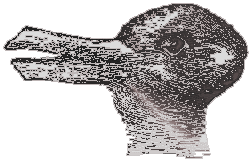 Gregory Eiselein
Gregory Eiselein Gregory Eiselein
Gregory Eiselein
2. Like Anderson's book of short stories (Winesburg, Ohio), Morrison's novel is set in small town Ohio. What is the town like? How was the neighborhood established? How does Morrison describe it? Where did it get its name? How is nearby Medallion different? In what ways is the Bottom a character or force in the novel? On the first page, the narrator tells us that the Bottom is gone. How does knowing that the Bottom exists no more affect your reading of the novel? In what ways is Sula like Winesburg, Ohio? In what ways are the Bottom and Winesburg similar? How are they different? What are the similarities beyond the small town Ohio setting?
3. Who is Shadrack? Why does he invent National Suicide Day? What kind of tone does this set for the novel? Is he crazy or dangerous or blessed? What is his role or function the community?
4. Readers often love, hate, or love-and-hate this book. Some examples of the scenes in Part One that tend to inspire strong reactions are:
--Eva's lost leg (pages 29-31 ff.)
--Plum's death (45-48)
--Nel and Sula playing with sticks (58-9)
--Nel and Sula playing with Chicken Little (60-61)
--Eva's response to Hannah's question about love (67)
--Hannah and the yard fire (75-78)
Why would these scenes inspire such a strong response? Think about each one of these scenes. What is disturbing or provocative about it? What does it make you think about? What is its relationship to the novel's important themes, plots, and characters? What is your own response to or your own ideas about each of these scenes?
5. Like Little Women, Sula is a novel about families. Think about the relationships between Nel, her mother Helene, and her grandmother Rochelle, and her great-grandmother Cecile. Are they a close-knit like the March family? Why or why not?
6. I noticed that both Nel and Amy from Little Women use a clothespin to try to reshape their noses (see Sula page 55). Does this tiny detail suggest any similarities between these two characters? In what ways is Nel like Amy?
7. This question is especially for those of you who are familiar with Christianity and/or the Bible. Track down the biblical origin of as many of the names as you can. Some will be obvious, others less obvious. Which names seem appropriate to their biblical origin? Which names don't seem to fit? If any biblical name doesn't seem appropriate, why do you think Morrison uses it in Sula. Have you been able to spot any other Christian or biblical symbolism? If so, what are some examples?
8. Sula seems to be a novel that's filled with symbolic references: place names, character names, repeated images (mirrors, skin color, fire, water, wind, birds, etc.). Choose any one symbol or repeated image and track it through the novel. Think about the meanings of this symbol in relationship to the novel's plot, characters, and themes. Can you think of other symbols that are important to the story?
9. Sula is a novel about friendship between girls who come from very different families and communities. So what draws them together? What are the biggest challenges to their friendship? What keeps them friends?
10. Sula is also a novel about men and boys. How does World War I affect male characters such as Plum or Shadrack? Eva seems to have a certain power over men. What does this tell us about the men in the book? What are similarities that connect the men in the book? What are the most important differences (besides age) between the men and the boys in the book? In what ways does age not make much of separating difference between the men and the boys in this book? Who are your favorite men in the book? Who confuses you most?
11. Like Emma Lazarus's poetry, Morrison's Sula treats themes such as racial prejudice; grief, pain, and suffering; good and evil. Examine these three themes in Sula.
--How does the novel represent racism? How does racism affect the characters?
--Where does grief appear in the novel? What causes the grief? How does each character deal with it? What are the interesting differences between how each deals with her or his grief?
--Is this book about evil? Is Sula herself evil? Does Sula's evil change the town? If so, in what ways? What does the novel, in your opinion, have to say about evil? What does the novel say about or do with Christian imagery and theology?
12. Are African Americans portrayed in a positive or negative light in the book? What about the portrayal of white people? Or is discussion of positive and negative role models beside the point?
13. The book's epigraph is from an author with whom you are quite familiar, Tennessee Williams. How does the epigraph relate to the plot, theme, or characters in Sula? What do Williams and Morrison as writers have in common?
14. Sula contains some adult language and mature themes (racism, sexuality, and more). If you were a high school teacher or the parent of a high-schooler, would you consider Sula appropriate reading for high school students?
Home | Department of English | Graduate Studies | Cultural Studies | Brain Power | Kansas State University
This page was updated on 2 November 2002. Other pages on this site may have been updated more recently.
These pages are copyright © 1995-2002 Gregory Eiselein.